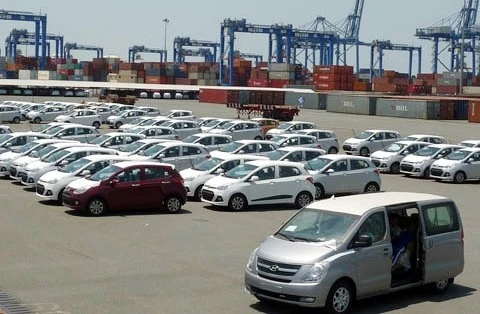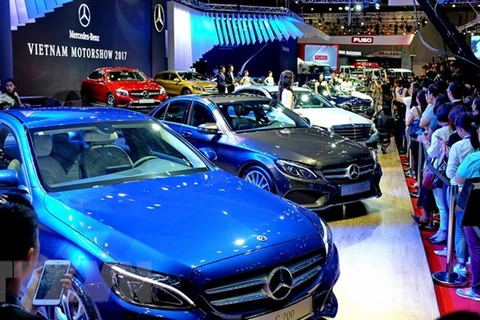Hanoi (VNS/VNA) - The Ministry of Industry and Trade (MoIT) wants to take advantage of market and policy opportunities to promote automobile manufacturing projects of domestic automakers including Truong Hai Auto Corporation (Thaco), Thanh Cong Group and VinFast.
The ministry submitted a report to the National Assembly deputies that said it aims to raise the output of domestic auto manufacturing and build up a supply chain for automakers in the country.
The MoIT also proposed the policy makers promulgate the revision of the special consumption tax rate for vehicles with a high localisation rate (measuring the use of local parts). Locally-produced parts will be free from the tax.
The ministry said output of locally manufactured and assembled automobiles had increased in recent years. Domestic automobile manufacturing reached 283,300 units in 2016, up from 200,000 the previous year. Vehicles have been exported to Laos, Cambodia, Myanmar and the Mid-America region. However, the MoIT said the industry had not yet created co-operation among businesses.
The localisation rate of several types of cars is still lower than the target because the industry lacks a network of material suppliers and large-scale parts producers. Although the target rate was set at 40 percent in 2005 and 60 percent in 2010, it sits at just seven to 10 percent on average. Thaco leads among manufacturers with a rate of 15 to 18 percent, while Toyota Motor Vietnam reaches 37 percent for the Innova model alone.
Locally-made parts are primarily simple components like tubes, tires, sears, mirrors, wires, batteries and plastic products. Meanwhile, 80 to 90 percent of the raw materials for automobile production, including steel, aluminum alloys, plastic resin and high tech rubber, are currently imported. This amounts to 2-3.5 billion USD.
Until 2025 and 2035, the MoIT said the industry would focus on small sedans suitable for Vietnamese people and follow the worldwide trend of environmentally friendly vehicles like hybrids and electric cars.
The industry target is to meet 60-70 per cent of market demand with a localisation rate of 35-40 percent by 2020. It will continue to focus on trucks, buses and specialised vehicles serving agriculture and rural development.
Total industry output in 2018 is not expected to be higher than in 2017. Automakers’ business results will depend on their ability to implement the Government’s Decree 116, which details acceptable conditions for production, assembly, import and handling of warranty and maintenance services. Car production this year is expected to reach 235,000 units, down 1.3 percent compared to 2017.-VNS/VNA
VNA






















